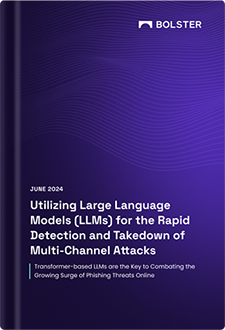What types of websites can be scanned with sitescan?
Sitescan is a powerful tool from the esri ArcGIS Reality suite that can scan a wide range of websites to identify potential vulnerabilities and security risks. It is designed to be versatile and can be used to scan various types of websites, providing valuable insights for IT security and risk management professionals.
Here are some examples of websites that can be scanned with sitescan:
- E-commerce websites: Online stores are a prime target for hackers due to the sensitive customer data they handle, such as credit card information. Sitescan can help identify vulnerabilities in the website’s payment gateway, shopping cart, or user authentication systems.
- Corporate websites: Companies often have websites that act as a digital face of their brand. These websites may contain important customer information, employee details, or intellectual property. Sitescan helps in locating potential security weaknesses in the website infrastructure, content management system, or backend databases.
- Government websites: Government websites handle critical information and provide essential services to the public. These websites may hold citizen data, financial information, or sensitive documents. Sitescan can help identify vulnerabilities in the website’s infrastructure, login systems, or any backdoors that may allow unauthorized access.
- Educational institution websites: Educational institutions often have websites that handle student records, financial information, or research data. This cloud based storage can be targeted by hackers for various reasons, such as identity theft or intellectual property theft. Sitescan can help identify vulnerabilities in the website’s databases, authentication systems, or any insecure file storage.
How does sitescan work?
SiteScan is a powerful IT security tool that helps organizations identify and address vulnerabilities in their web applications and infrastructure. It works by conducting comprehensive scans and assessments of websites and network systems to detect potential security risks and weaknesses.
The process begins by collecting information about the target website or network, including its domain name, IP address, and any specific URLs or webpages to be scanned. SiteScan then uses a combination of automated and manual techniques to analyze various aspects of the target, such as its coding, configuration, and security protocols.
One of the key features of SiteScan is its ability to perform vulnerability scanning. This involves systematically processing the target for known security vulnerabilities and weaknesses, such as outdated software versions, misconfigurations, or common coding errors. By identifying these vulnerabilities, organizations can take prompt action to mitigate the risks and enhance the overall security posture of their web applications and infrastructure.
Another important aspect of SiteScan is its ability to conduct web application security testing. This involves simulating real-world attack scenarios to assess the resilience of web applications against common threats, such as cross-site scripting (XSS), SQL injection, and cross-site request forgery (CSRF). By doing so, organizations can uncover potential vulnerabilities in their web applications and take appropriate measures to reinforce their security defenses.
Additionally, SiteScan provides detailed analytics and recommendations based on the findings of the scans and assessments. These reports offer insights into the identified vulnerabilities, their potential impact, and recommendations for remediation. This empowers IT security and risk management professionals to take appropriate actions to strengthen their organization’s security posture.
One of the key features of SiteScan is its ability to conduct regular vulnerability scans. These scans help identify any weaknesses in an organization’s IT infrastructure, applications, and systems that could be exploited by hackers or malicious actors. By monitoring for vulnerabilities, IT security professionals can stay one step ahead of potential threats and proactively address any weaknesses before they are exploited.
In addition to vulnerability scans, SiteScan also offers comprehensive assessments that evaluate an organization’s overall security posture. These assessments take a holistic approach, examining various aspects of security including network security, application security, and data security. By conducting these assessments, IT security professionals can gain a comprehensive understanding of their organization’s security strengths and weaknesses, enabling them to prioritize and allocate resources effectively.
SiteScan’s detailed reports provide valuable insights into the vulnerabilities and their potential impact on an organization’s security. These reports not only identify vulnerabilities but also provide an assessment of their severity and likelihood of exploitation. This allows IT security professionals to prioritize their remediation efforts and address the most critical vulnerabilities first.
Furthermore, SiteScan’s recommendations for remediation are based on industry best practices and regulatory requirements. These recommendations are tailored to the specific vulnerabilities identified during the scans and assessments, ensuring that organizations are taking the most effective actions to mitigate their security risks. By following these recommendations, IT security professionals can strengthen their organization’s security posture and reduce the risk of a successful cyber attack.
About CheckPhish
CheckPhish is the place to start for domain monitoring. CheckPhish is a real-time URL and website scanner. Once a URL is submitted, our engine spins up an automated headless browser to capture a live screenshot, natural language content on the webpage, DOM, WHOIS, and other essential information. The engine sends this information to multiple deep learning models in the backend that can recognize essential signals like brand logos, sign-in forms, and intent. Our engine then combines these signals with our proprietary threat intel data to identify phishing and scam pages.






